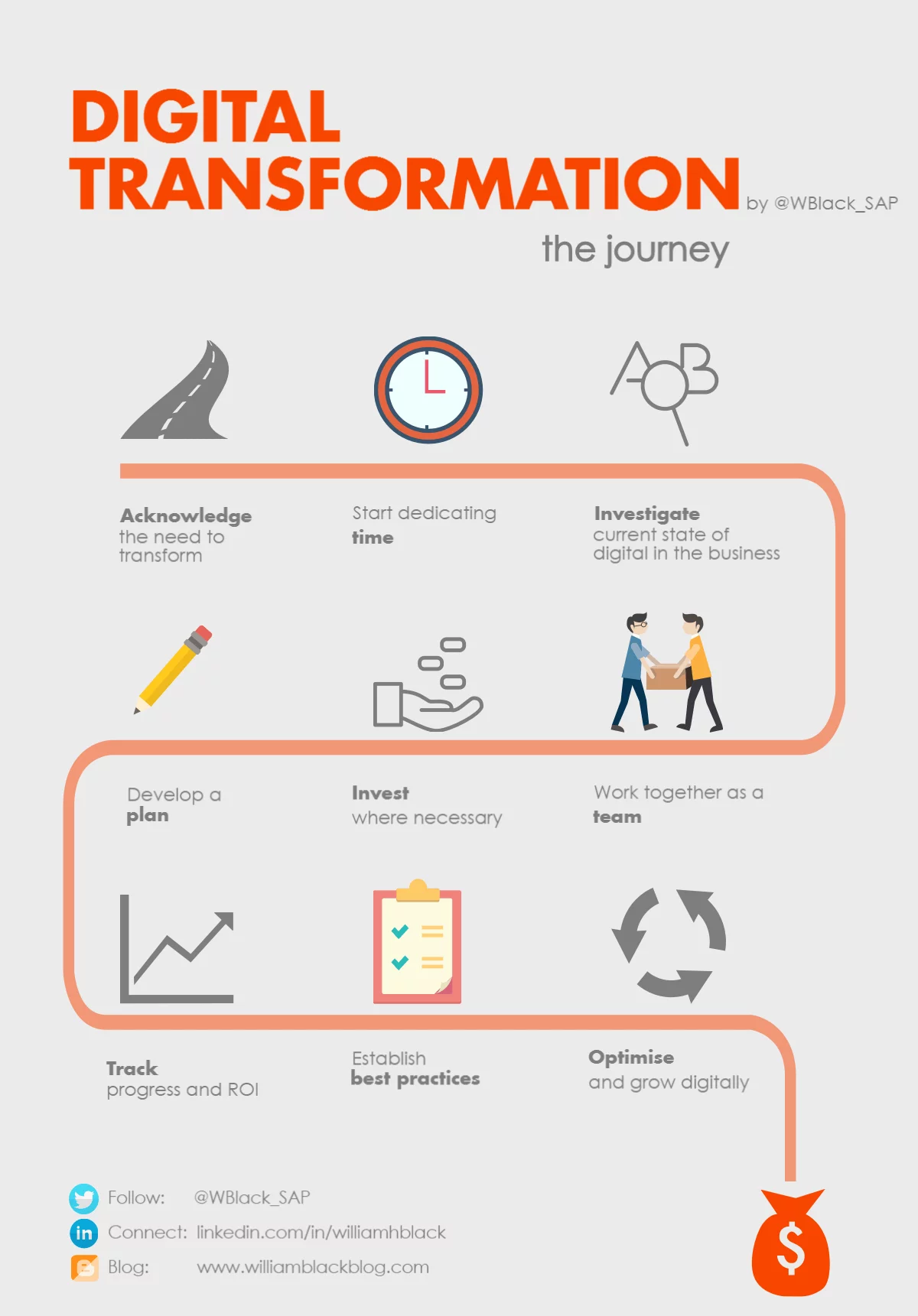
Change is everywhere you look. Whether it’s in business settings or everyday life, change drives new standards of excellence. Are you yet to establish a change management 101?
Change is critical for success in the workplace. Organizations must develop if they’re to survive the times, especially when there’s a new company waiting on every corner.
Those that innovate are more likely to succeed, and can easily overtake rivals who choose not to make transformative efforts.

Image source: William Black
That’s why organizational development is so important, for enabling companies to expand their horizons and meet ever-changing customer expectations.
But when organizations develop change must be managed accordingly. Attempts to transition without proper structure can cause more harm that’s good.
That’s where good change management pays dividends. It offers some form of stability in uncertain times, when staff irrationally fear the worst.
You can’t blame them though. When a change initiative is suddenly introduced, it can threaten an environment that’s considered secure.
The right change management process takes everything into account. It will involve considering staff needs, communicating the benefits of change accordingly, and taking a measured approach to digital transformation.
But how exactly should organizations approach change?
Well, fortunately there are various change management models, which serve as effective organizational development theory which can be applied across the board.
These help companies organize solutions, plan for potential mistakes, and create an effective two-way dialogue that keeps staff on the same page.
There are various factors to consider when selecting the right organizational development theory for your company.
These include things like the size of your company, existing culture, cost, preparation, and various other decisions to optimize your approach.
Your best bet is to tailor your approach on organizational circumstances, which may well involve extracting relevant points from relevant change models.
If you’re wondering which model will best suit your company, here is some great organizational development theory to apply to your unique situation.
From these two models you can extract enough useful information to transition effectively. They’ll essentially serve as effective tools and techniques to transform business operations.
The Kubler Ross Change Curve
This model was originally formulated to explain what happens when people are dealing with grief.
The emotions of losing a loved one translate to the business world, where employees must adapt to change in a grief like state.
Employees must overcome feelings of loss when new procedures are introduced, leaving the past behind and moving on.
This organizational development theory outlines the five following steps:
Denial
Employees might be adamant they don’t need to change, but leaders should gently encourage them to embrace a developmental mindset.
What’s most important is staff are given a chance to express their concerns. Reassurance is critical, alongside rolling out change gradually so staff aren’t overwhelmed.
Anger
This should be expected, but can be mitigated with effective pre-planning.
Understanding how employees will react will make it much easier to deal with the inevitable anger they’ll experience.
Bargaining
With an open embrace for opinions and feedback, leaders can meet staff on their own terms and vice-versa.
A bit of give and take certainly doesn’t hurt. It’s important you set clear expectations so staff know what they need to do.
Depression
Though staff might be saddened by change, keeping a positive outlook can bring employees out of their slumber.
An optimistic approach from the top down can overcome staff tendencies to get down on themselves, alongside offering advanced support.
Remind staff their sadness and tendency to hold onto the past is only temporary. Help them through their emotional state and their attachment to the past will slowly fade with time.
Acceptance
As staff slowly begin to accept change, managers should reinforce positive behavior with rewards and incentives.
Staff will begin to act favorably, embracing change, and their positive input will be encouraged with positive feedback.
As staff accept change, new practices and procedures will slowly become the new norm.
They will have reached a level of acceptance which is beneficial for the company going forward.
Kotter’s 8 Step Change Model
This organizational development theory was established on the basis of research conducted on business transitions.
On the back of this, Kotter addressed the people affected by change, before establishing eight steps for leaders to drive successful transformations. These are as follows:
Urgency
Leaders must demonstrate to their team why change is important.
By creating a sense of urgency, staff will have reason to act in the best interests of change.
It’s important to create dialogue in the workplace, one which stresses the importance of change.
Employees should be involved at every stage, and be given a chance to share their opinions on what needs to happen.
Coalition
Next a coalition of stakeholders should be formed. To help establish strong bonds among teammates, you can engage them with fun games and activities. This will slowly remove the stigma that change is boring.
The early champions of change have a huge impact on encouraging staff progression. Their commitment to change should be infectious and promotional.
Strategic Vision
Change will be defined, and a strategic vision for transformation developed.
35 Articles for Change Management Strategy Success https://t.co/bBXuJ7x3oU #innovation #change
— Brainzooming Group (@Brainzooming) September 28, 2018
Involving Everyone
Once the ball is rolling, early adopters should recruit new adopters.
Everyone should be involved in the plan, and be open to feedback and collaboration.
Reduce Obstacles
Problems are inevitable, but when predicted they can be effectively safeguarded against.
Analyze processes to predetermine mistakes that could cause destruction if undetected.
Short-Term Wins
Leaders must establish milestones, rewarding staff for positive behavior.
Celebrate short term wins with incentives, reinforcing actions that contribute to change goals being met.
Momentum
Keep the momentum going by continuously updating your plans.
This will fit with the ever-changing business scope you’ll experience.
Goals should be flexible, with staff who are up-to-date with the latest initiatives.
Stability
Change should be solidified and become the new status quo.
It should be reinforced and eventually become part of new company culture.
Once change has become the new norm, you will have justified your measured efforts to achieve a positive outcome.
WalkMe Team
WalkMe spearheaded the Digital Adoption Platform (DAP) for associations to use the maximum capacity of their advanced resources. Utilizing man-made consciousness, AI, and context-oriented direction, WalkMe adds a powerful UI layer to raise the computerized proficiency, everything being equal.



